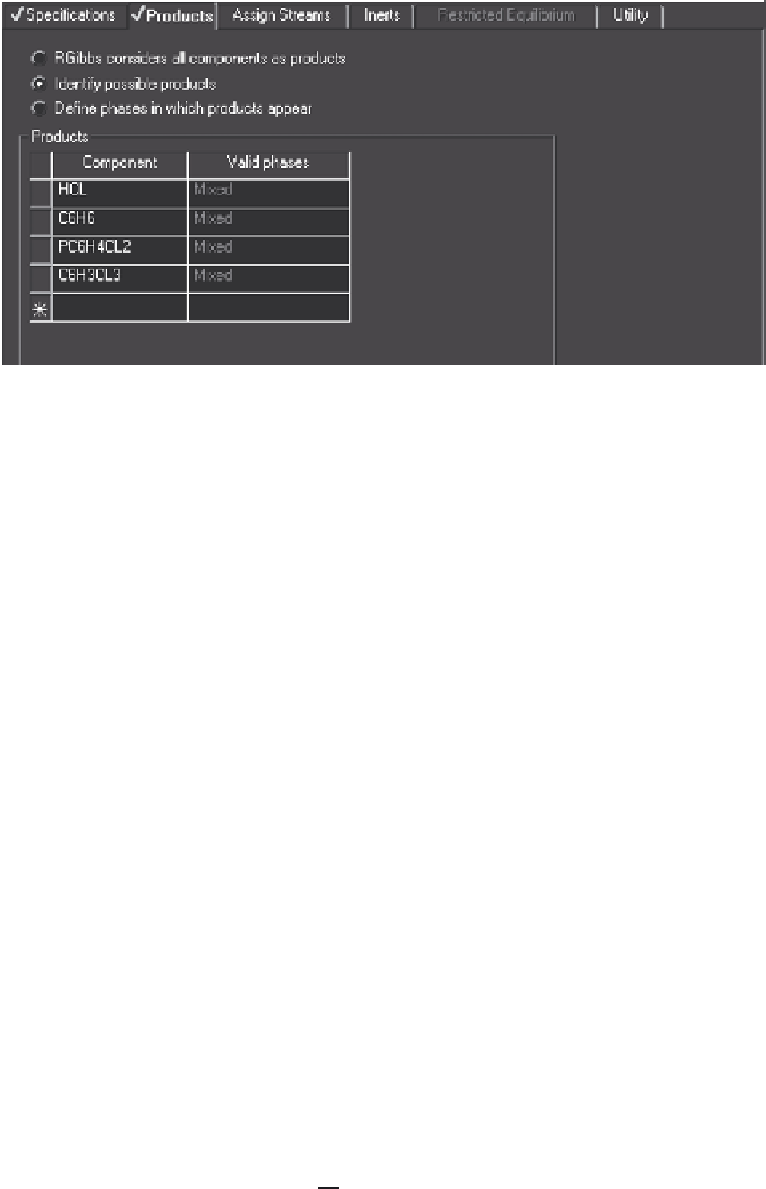Information Technology Reference
In-Depth Information
Figure 10.9
RGibbs product identification.
Figure 10.10 shows the configuration of one of the reactions that occurs during the chlo-
rination of benzene. Note that reactant coefficients require a minus sign and products
a plus sign. Additionally, a check box is available to define the reaction as reversible.
Four reaction class options are displayed: Equilibrium, Powerlaw, LLHW [i.e., the
Langmuir-Hinshelwood-Hougen-Watson kinetics model (Perry and Green, 1999)],
and GLLHW (a generalized LLHW model). Various tabs become available, such as
equilibrium based on the reaction model selected. It is possible for different reaction
classes to exist simultaneously within a reactor.
In all cases, when any rigorous reactor block is used, a Reactions tab appears. This
will permit the selection of a reaction group for the current reactor.
10.5.1 Equilibrium Class
When the Equilibrium class is chosen, the Equilibrium tab becomes available and
Figure 10.11 is displayed. The choice of equilibrium constant by Gibbs energies or by
a built-in empirical expression is available, as is the choice of the phase in which the
reaction takes place.
10.5.2 Powerlaw Class
When the Powerlaw class is chosen, the Kinetic tab becomes available and Figure 10.12
is displayed. It is important to note that there are six different choices for the concen-
tration of a component. For example, when molarity is chosen from the drop-down list,
the appropriate unit, kmol/cubic meter, is displayed but is hidden temporarily under-
neath the drop-down list. The Powerlaw kinetic expression is composed of two parts,
the kinetic factor and the driving force. For all cases the kinetic factor is given by
r
=
k
T
T
0
n
e
(
−
E/R)(
1
/T
−
1
/T
0
)
(10.11)











